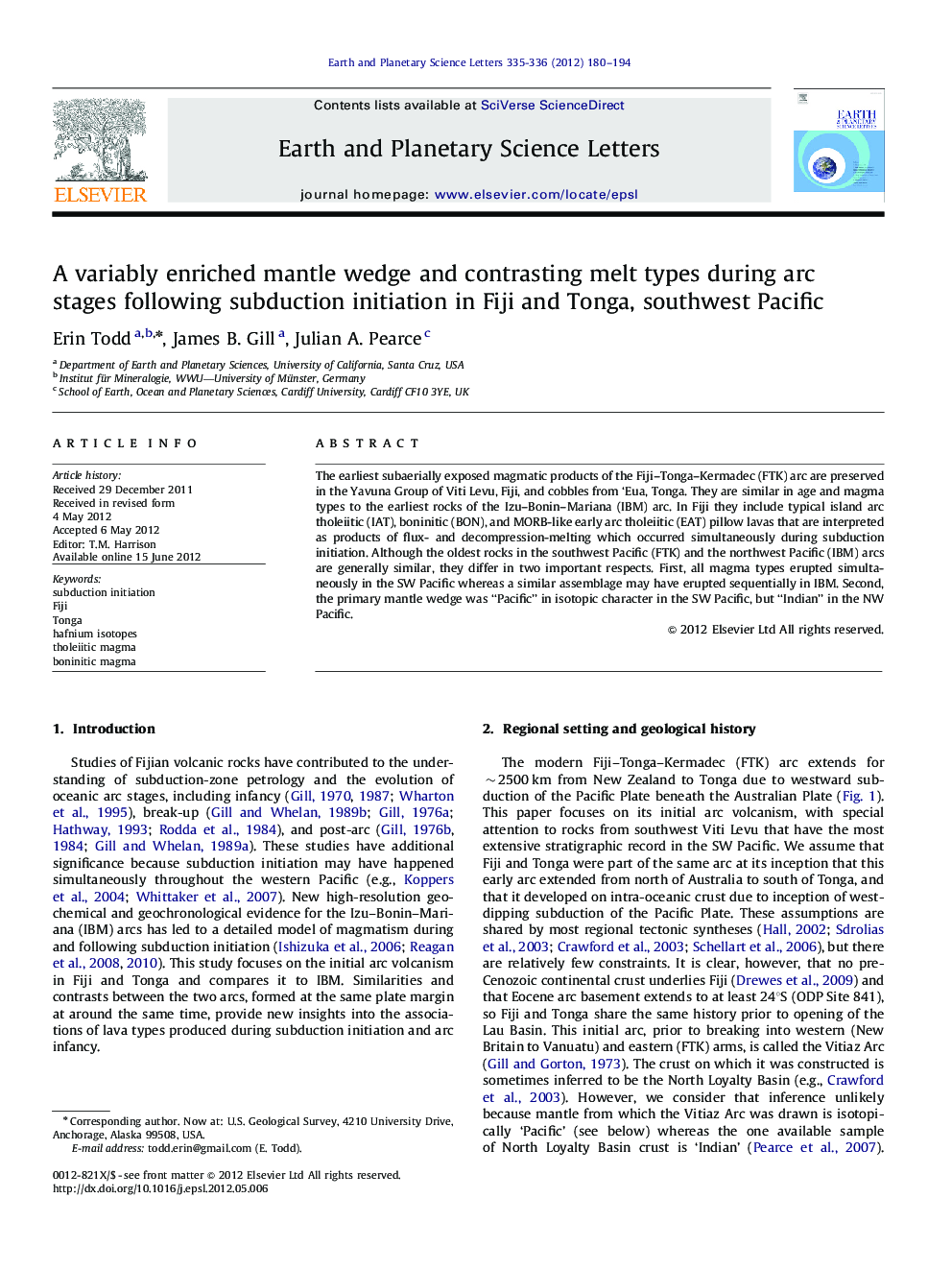| Article ID | Journal | Published Year | Pages | File Type |
|---|---|---|---|---|
| 4677521 | Earth and Planetary Science Letters | 2012 | 15 Pages |
The earliest subaerially exposed magmatic products of the Fiji–Tonga–Kermadec (FTK) arc are preserved in the Yavuna Group of Viti Levu, Fiji, and cobbles from ‘Eua, Tonga. They are similar in age and magma types to the earliest rocks of the Izu–Bonin–Mariana (IBM) arc. In Fiji they include typical island arc tholeiitic (IAT), boninitic (BON), and MORB-like early arc tholeiitic (EAT) pillow lavas that are interpreted as products of flux- and decompression-melting which occurred simultaneously during subduction initiation. Although the oldest rocks in the southwest Pacific (FTK) and the northwest Pacific (IBM) arcs are generally similar, they differ in two important respects. First, all magma types erupted simultaneously in the SW Pacific whereas a similar assemblage may have erupted sequentially in IBM. Second, the primary mantle wedge was “Pacific” in isotopic character in the SW Pacific, but “Indian” in the NW Pacific.
► We present chemistry and isotopes for Fiji–Tonga–Kermadec (FTK) early arc volcanism. ► MORB- and arc-like lavas were erupted contemporaneously in the Fijian early arc. ► FTK (SW Pacific) is compared to early arc rocks from Izu–Bonin–Mariana (NW Pacific). ► The FTK arc mantle was isotopically “Pacific” but was “Indian” in the NW Pacific.
